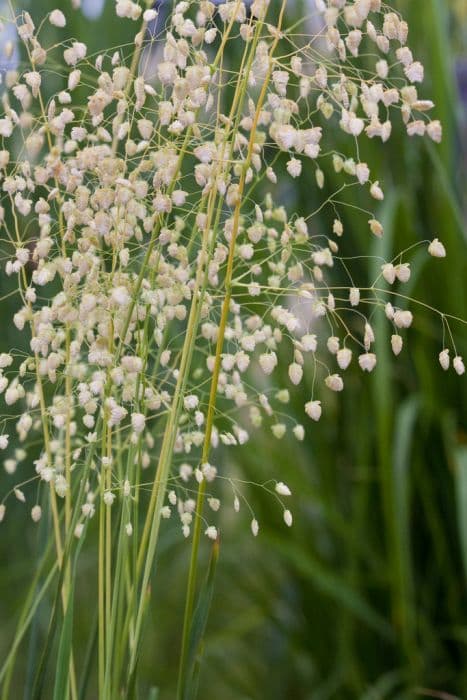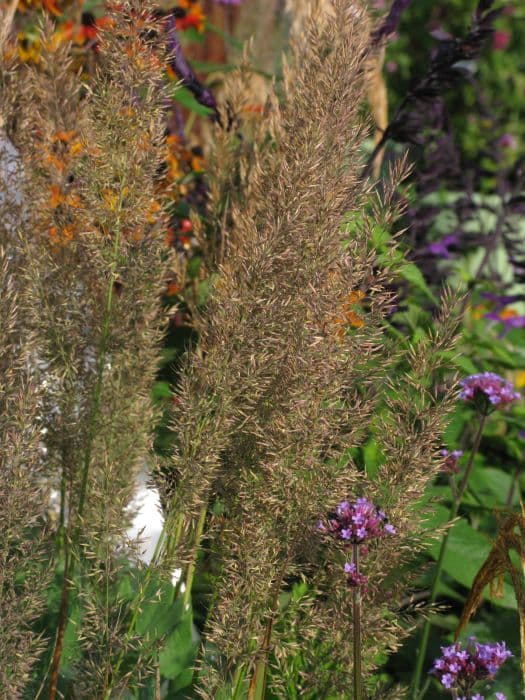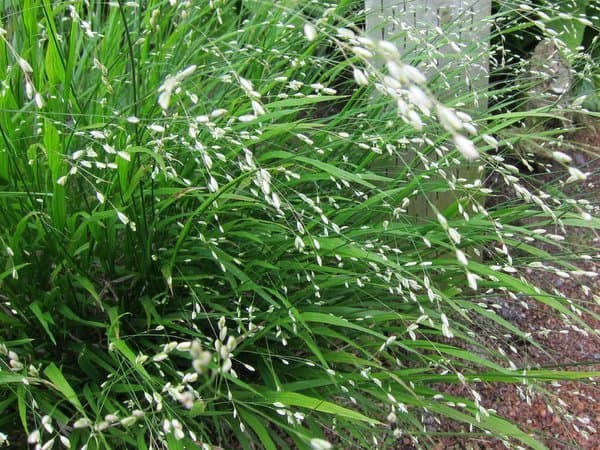Green Bamboo Phyllostachys viridiglaucescens

ABOUT
This plant, commonly known as the Chinese timber bamboo, is a striking species known for its aesthetic appeal and lushness. Its canes, or stems, showcase a vibrant green color with a touch of blue, creating a subtle glaucous effect that is both unique and visually captivating. These canes are sturdy and upright, growing in a clustered fashion and providing an architectural quality to the landscape. The foliage of the Chinese timber bamboo consists of elongated, slender leaves that drape gracefully from the canes. These leaves are a bright green color, contributing to the lush appearance of the plant. They are arranged alternately along the length of the canes, creating a rhythmic pattern that dances lightly in the breeze. Over time, the canes may develop into a dense, tall grove, offering a sense of seclusion and exotic charm. Their smooth, glossy surface is occasionally interrupted by the nodes, the segments where the canes are naturally divided, adding texture and interest to the plant's overall morphology. Chinese timber bamboo's appearance can also change with the seasons, though the plant remains evergreen, maintaining its greenery throughout the year. In its preferred climate, it exhibits vigorous growth and can become a prominent feature in gardens or landscapes where a bold statement or natural screen is desired. The plant's combination of striking stems, delicate leaves, and overall robustness make it a popular choice for those seeking an ornamental plant with a dramatic flair.
About this plant
 Names
NamesFamily
Poaceae
Synonyms
Green-glaucescent Bamboo, Verdant Bamboo
Common names
Phyllostachys viridiglaucescens
 Toxicity
ToxicityTo humans
Phyllostachys viridiglaucescens, commonly known as the bamboo, is not considered toxic to humans. Therefore, ingesting parts of this plant typically does not result in poisoning or adverse health effects attributable to toxicity. Bamboo shoots are actually consumed in various cuisines around the world after proper preparation.
To pets
The common bamboo is also not considered toxic to pets. It is generally safe for dogs, cats, and other domestic animals if they happen to ingest small amounts of this plant. There should be no symptoms of poisoning from bamboo, as it is not known for having toxic compounds that affect pets. However, as with any non-food items, consuming large amounts could potentially lead to mechanical issues like blockages or indigestion.
 Characteristics
CharacteristicsLife cycle
Perennials
Foliage type
Evergreen
Color of leaves
Green
Height
20 feet [6 meters]
Spread
10 feet [3 meters]
Plant type
Bamboo
Hardiness zones
6
Native area
China
Benefits
 General Benefits
General Benefits- Aesthetic Appeal: Adds a vibrant green hue and unique structure to gardens and landscapes.
- Privacy Screen: Grows tall and dense, providing a natural privacy barrier.
- Noise Reduction: The dense canes and foliage can help dampen traffic and neighborhood noise.
- Erosion Control: The robust root system stabilizes soil and prevents erosion.
- Windbreak: Acts as a natural wind deterrent, protecting gardens and property.
- Shade Provider: Large stands can offer cooling shade in hot climates.
- Habitat for Wildlife: Serves as shelter and provides food for various bird and insect species.
- Renewable Resource: Culms (stems) can be harvested for construction or crafts, then regrow.
- Carbon Sequestration: Like other bamboos, helps capture carbon dioxide from the atmosphere.
 Medical Properties
Medical PropertiesThis plant is not used for medical purposes.
 Air-purifying Qualities
Air-purifying QualitiesThis plant is not specifically known for air purifying qualities.
 Other Uses
Other Uses- Craft Material: The hard, durable culms of Phyllostachys viridiglaucescens, commonly known as green bamboo, can be used to make various handicrafts, such as baskets, mats, and decorative items.
- Fishing Rods: Enthusiasts of traditional fishing methods can fashion fishing rods from the strong and flexible canes of green bamboo.
- Agricultural Tools: Through simple processing, green bamboo can be used to create sturdy tools for agricultural use, such as stakes for plants and simple irrigation pipes.
- Musical Instruments: The hollow structure of its canes allows green bamboo to be used in the manufacturing of wind instruments, such as flutes and panpipes.
- Food Wrapping: The large leaves of the green bamboo can serve as natural wraps for steaming or grilling foods, adding a subtle flavor and protecting the food from direct heat.
- Walking Sticks: The strength of the dried canes makes them ideal for crafting walking sticks or trekking poles for hikers and walkers.
- Ornamental Features: Pieces of the ornate green bamboo can be used in decorative art, interior design or even as elements in landscape gardening.
- Protective Barriers: Planted in a row, green bamboo can create a dense, quick-growing barrier that can serve as a windbreak or privacy screen.
- Culinary Tools: The hollow canes can be split and shaped into spoons, ladles, or other utensils for use in the kitchen.
- Textile Material: The fine fibers obtained from green bamboo can be processed to make textiles, such as yarns for weaving or for knitting purposes.
Interesting Facts
 Feng Shui
Feng ShuiThe Bamboo is commonly used in Feng Shui to attract peace, luck, and prosperity. It is associated with the wood element, which promotes growth and vitality. Placing a bamboo plant in the east sector of a home or office is believed to foster good health, while positioning it in the southeast can enhance wealth and abundance.
 Zodiac Sign Compitability
Zodiac Sign CompitabilityThe Bamboo is not used in astrology practice.
 Plant Symbolism
Plant Symbolism- Adaptability - As a species of bamboo, Phyllostachys viridiglaucescens (commonly known as Green Bamboo) is known for its ability to adapt to various climates and soil conditions, representing flexibility and resilience in life.
- Growth and Vitality - Green Bamboo symbolizes continuous growth and vitality due to its rapid shooting upwards, which signifies a strong life force and relentless progression.
- Strength and Stability - The strong and sturdy nature of bamboo culms embodies the qualities of strength and stability, suggesting that one should stand firm even in adversity.
- Peace and Tranquility - Bamboo forests are quiet and peaceful places. As such, Green Bamboo is often associated with peace and serves as a reminder to seek tranquility in one's life.
- Good Fortune - In many Asian cultures, bamboo is considered a symbol of good luck and prosperity, and having a Green Bamboo plant is thought to bring positive energy and wealth into a home or business.
- Longevity - Due to its long life and evergreen nature, Green Bamboo symbolizes longevity and endurance, representing a long and healthy life.
- Simplicity and Modesty - Bamboo’s simple appearance and growth form are seen as a symbol of simplicity and modesty, inviting us to live a life without excess or pretense.
 Water
WaterThe Common Bamboo (Phyllostachys viridiglaucescens) requires consistent moisture and should be watered deeply when the top inch of the soil feels dry to the touch. During the growing season, water at least once a week, providing about 1-2 gallons for each plant, depending on the size and weather conditions. In hot or windy weather, increased watering is necessary. During the winter, reduce the frequency but do not allow the soil to become completely dry. It is best to water this bamboo in the morning to allow any excess moisture to evaporate during the day.
 Light
LightThe Common Bamboo prefers full sun to partial shade conditions. Ideally, place the plant in a spot where it gets at least 4 to 6 hours of direct sunlight daily. However, it can also thrive in dappled sunlight throughout the day. Avoid spots with prolonged deep shade as this can hinder its growth.
 Temperature
TemperatureThe Common Bamboo can tolerate a wide range of temperatures, but ideally, it thrives in environments between 40 and 95 degrees Fahrenheit. While it can survive occasional dips to around 0 degrees Fahrenheit, prolonged exposure to such cold temperatures can damage the plant. Ensure that it's planted in a location where it is protected from extreme cold winds for better survival rates.
 Pruning
PruningPruning the Common Bamboo is essential to control its spread, remove dead canes, and maintain its shape. The best time to prune is late summer to early fall, after the plant has completed its growth cycle. Thin the clump by cutting some of the older canes at ground level, allowing sunlight to reach the center of the clump and encourage new growth. Avoid excessive pruning and only remove the necessary canes each year.
 Cleaning
CleaningAs needed
 Soil
SoilThe best soil mix for the common bamboo, also known as Phyllostachys viridiglaucescens, should be well-draining and rich in organic matter. A mix of loamy soil, compost, and sand or perlite is ideal to facilitate drainage while providing nutrients. The soil pH should be slightly acidic to neutral, ranging between 6.0 and 7.0 for optimal growth.
 Repotting
RepottingCommon bamboo should be repotted every two to three years to ensure it has enough space to grow and to refresh the soil. Over time, bamboo can become pot-bound, so regular repotting helps maintain its health and vigor.
 Humidity & Misting
Humidity & MistingCommon bamboo thrives in moderate to high humidity levels. It's best to maintain a humidity level of 40% to 60%. This plant is flexible with humidity; however, if the air is too dry, the leaf edges may start to brown.
 Suitable locations
Suitable locationsIndoor
Use well-draining soil, place in bright, indirect light, and maintain humidity.
Outdoor
Plant in well-draining soil, full sun to part shade, and water regularly.
Hardiness zone
7-10 USDA
 Life cycle
Life cyclePhyllostachys viridiglaucescens, also known as Green Bamboo, starts its life cycle as a seed, germinating to produce a small seedling. These seedlings grow into juvenile plants with a network of rhizomes underground, which will eventually send up shoots. The shoot phase sees rapid vertical growth, with the culm (stem) developing nodes and internodes. In the following years, the bamboo matures, with the culms hardening and branching out to produce leaves. Green Bamboo typically flowers at unpredictable intervals, which can range from several years to over a century, after which the plant often dies. The seeds produced from the flowering can then disperse and start the life cycle anew if the conditions are right.
 Propogation
PropogationPropogation time
Spring-summer
Propogation: Phyllostachys viridiglaucescens, also known as Incense Bamboo, is commonly propagated through division, which is most successfully performed during the spring when the plant is entering a period of active growth. To propagate by division, one would dig up a mature clump of bamboo and carefully separate it into smaller sections, ensuring that each section contains at least one or two growing culms and a portion of the root system. These divided sections can then be replanted in well-draining soil, at a planting depth similar to that of the original plant. Adequate watering and protection from harsh conditions are important until the new divisions establish themselves. This method allows for relatively fast establishment of new plants and is a popular choice for those wanting to expand their bamboo plantings or create natural barriers.









